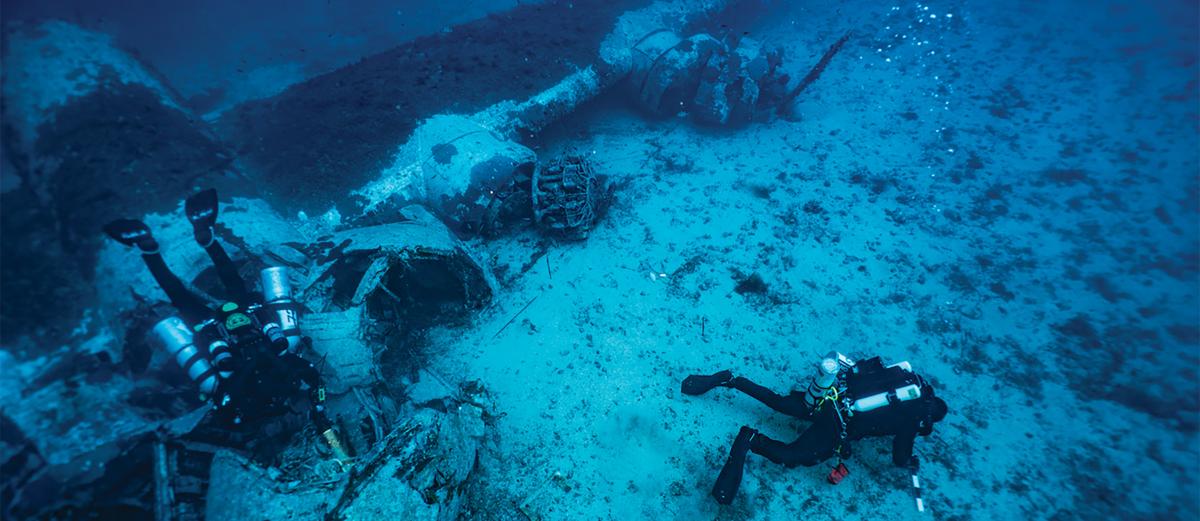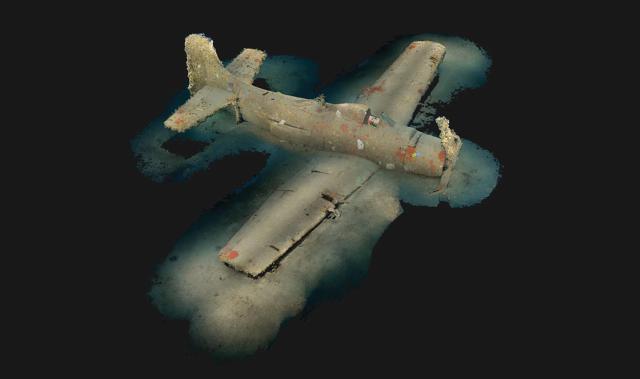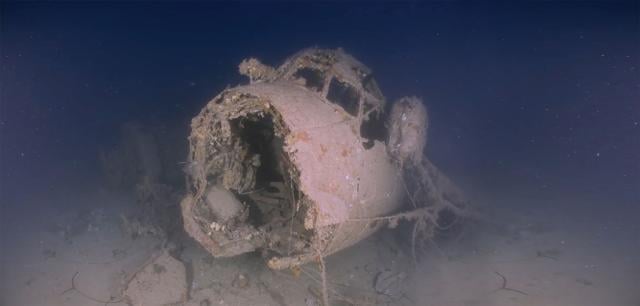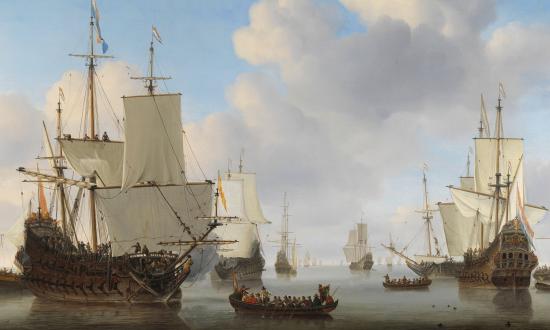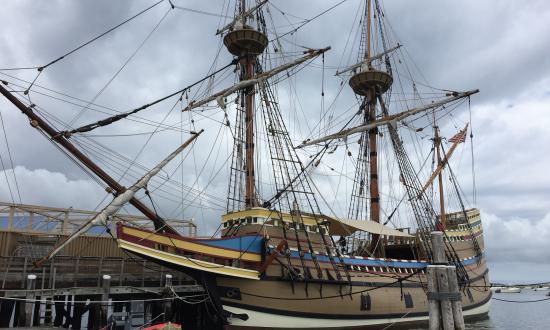On 10 June 1940, Benito Mussolini, dictator of Italy and ally to Hitler’s Nazi Germany, declared war against Britain and France. The small cluster of islands that make up the Republic of Malta, lying just 50 miles south of Italy, became an area of great strategic importance for the Allies’ efforts, both as a stronghold for their military campaigns in North Africa and as a base from which to launch their planned invasion of mainland Italy.
Malta was the only Allied presence between Alexandria, Egypt, and Gibraltar in the west, after the fall of Crete in June 1941. It served as a key strategic position and supply route and thus was a prime target for the Axis powers.
From June 1940, to November 1942, Malta was subjected to a sustained and devastating aerial bombardment by Axis bombers. Attacks occurred over 154 days and nights, and 6,700 tons of bombs were dropped on the island and surrounding seas.
In June 1940, Malta’s fighter force consisted of just four aging Gloster Gladiator biplanes. But by July 1943, Malta had become the base for more than 600 modern fighters and bombers. During the conflict, many aircraft on both sides crashed into the vast seascape around the island.
Malta’s rich history of aviation, both during and after World War II, has marked the island as a center for underwater aviation archaeology and heritage. A large number of aircraft crashed in a relatively short period of time, which has allowed archaeologists and historians to observe the impressive pace of technological innovations during and shortly after the conflict.
A number of these plane wrecks are under the protection of Heritage Malta’s Underwater Cultural Heritage Unit. In keeping with the UNESCO 2001 Convention on the Protection of the Underwater Cultural Heritage, the sites are preserved in-situ and recorded in minute detail, with the aim of protecting their structural integrity and their authenticity as historical sites.
Many of the discovered wrecks are popular dive sites, so it is important to regulate access and ensure they are properly preserved. As part of this effort, Heritage Malta recently launched a virtual underwater museum: Underwater Malta. Through the creation of high-tech digital records, the virtual museum allows members of the public to explore the wrecks for themselves using virtual-reality models with 360-degree rotation and zoom options. Viewers can explore a variety of different wrecks, from a Phoenician shipwreck to the Motor Torpedo Boat Schnellboot S-31.
Among the sites are three World War II–era plane wrecks: a Junkers Ju 88 (1941), a B-24 Liberator (1943), and a Douglas A-1 Skyraider (1947). The latter is incorporated in the wider World War II heritage. Each wreck has a different tale to tell, helping add color to the historical record and inform museum visitors about the development of aerial warfare during this period.
So what mysteries can maritime archaeology help uncover about these wartime behemoths?
The Douglas A-1 Skyraider
The Douglas A-1 Skyraider was designed by Ed Heinemann of the Douglas Aircraft Company at the end of World War II, but it did not operate during the conflict. The aircraft, named in the Douglas tradition of beginning U.S. Navy aircraft with the word “sky,” was developed following demand for a single-seat, long-range dive-torpedo bomber with a short runway requirement for take-off from an aircraft carrier. Renowned for its low-speed maneuverability, the Skyraider had straight, low-mounted, tapered wings that allowed it to deliver 8,000 pounds of bombs with target precision. Its success is reflected in its remarkably long military career, operating in the U.S. Navy, Marine Corps, and Air Force for more than three decades. It was also used by the British Royal Navy and French Air Force.
While the Douglas A-1 Skyraider missed its chance to participate in World War II, it became a stalwart of several other military conflicts, including the Korean War and the Vietnam War. In total, 3,108 Skyraiders were built in seven official versions, with 28 variations. These included both carrier and land-based aircraft, with versions for photographic reconnaissance and search missions. They could carry up to three crew members, but often just a single pilot was in the enclosed cockpit.
In October 1947, the aircraft carrier USS Midway (CVB-41) was on her first annual deployment in the Mediterranean with the Sixth Fleet, which operated as part of Naval Forces Europe. Her air wing group CVBG-1, was made up of two fighter squadrons. One of these squadrons was composed of four Douglas A-1 Skyraiders, which were tasked with carrying mail between the Midway and the Royal Air Force Hal Far airfield, the first permanent airfield to be built on Malta.
One of these Skyraiders, serial code 09236, was piloted by Lieutenant Robert H. L. Reeb. In December 1947, Lieutenant Reeb’s aircraft suffered a total engine failure just minutes after taking off from Hal Far airfield and began veering quickly off course toward the southern coast of Bir˙zebbu˙gia. Efforts to restart the engine were futile, and the aircraft plunged downward and struck the sea at an estimated speed of 75 to 90 knots (86–103 miles per hour). Hitting the water at a slight angle with the wheels and flaps up, the Skyraider floated for just a couple of minutes before sinking beneath the surface. Fortunately there was time for Reeb to exit the cockpit and deploy the aircraft’s emergency dingy. He was rescued by a Sikorsky HO3S Dragonfly helicopter that had been dispatched by the Midway. This was the first documented helicopter rescue in the Mediterranean.
The wreck site of the Douglas A-1 Skyraider was discovered in 2014 during a University of Malta offshore remote-sensing survey. The wreck is considered to be in excellent condition, which indicates a controlled landing or ditch effort. The visible elements of the wreck appear to be in intact, with the main fuselage, wings, tail, cockpit, nose, and propeller all in good condition. The aircraft sits prominently on the seabed, and its depth ensured the site has remained relatively undisturbed by human intervention, thus preserving its integrity.
The Junkers Ju 88 South
By late 1940, the Luftwaffe’s X. Fliegerkorps arrived in Sicily after the Norwegian campaign. It played a significant role in the Siege of Malta, and thanks to the island’s proximity to Sicily, it was possible for the Luftwaffe to conduct several air raids each day, with 200 bombers attacking in waves ranging from 5 to 30 aircraft, the vast majority of which were Ju 88s.
In 2019, a remote-sensing survey by the University of Malta identified a possible wreck site of a Ju 88 aircraft, and exploration of the site and close-up underwater photography confirmed the find. The wreck sits at a depth of 348 feet, lying upright on the sandy seabed, approximately 3.75 nautical miles northwest of Marsaskala. There is some damage to the nose section of the aircraft, along with the tail section, the latter of which points to the possibility that the plane was shot down by an Allied aircraft.
The nose of a Ju 88 is a glass structure that will always break off during the ditching process—no matter how smooth it is. In this case, it must have been very smooth, as there is very little damage other than the missing nose piece. Sometimes, distinguishing between damage caused by a crash or by flak can be difficult. One has to look for distinct details such as the “direction” of the damage; for instance, how the aircraft structure is deformed. In this case, some of the damage is on the port tail, which points to it being shot up from the rear, possibly in a dog fight with an Allied fighter.
Confirming the exact story behind the wrecked Ju 88 is difficult because of the intensity of aerial warfare over the Maltese islands at the time. On 1 January 1941, a Ju 88 is recorded as having crashed just offshore from Marsaskala Bay, resulting in the loss of its three-member crew. However, whether this is the same Ju 88 is inconclusive. Keeping precise records during World War II was problematic and often based on eyewitness reports. There were no human remains discovered at the wreck site in 2019, but it is possible the crew ditched the plane and it drifted, so the aircraft could have sunk a distance away.
The B-24 Liberator
While the Luftwaffe relied on the Ju 88 to inflict devastation on the Maltese Islands, the Allied forces targeted their enemies with the B-24 Liberator. This long-range heavy bomber came to be a symbol of U.S. industrial might. As the world’s most prolific multiengine aircraft, more than 18,000 were produced by the end of the war.
In early May 1943, Reggio Calabria, at the toe of the Italian boot, was subjected to one of the most destructive raids of the war by Allied forces, with more than 315 tons of bombs dropped over the region, resulting in almost 400 civilian casualties. On 6 May 1943, two waves of B-24s conducted a series of aerial raids targeting the harbor. Coming in from North Africa, they dropped 110 tons of bombs. While conducting a raid, one of the B-24s developed engine trouble over the city and was forced to jettison its bomb load. The crew decided to fly to Malta—its proximity to Sicily made it one of the few Allied bases in safe flying distance.
was smooth indeed. Credit: University of Malta
The aircraft tried to land in Luqa, a town in the southern region of Malta. However, after several failed attempts, the ten-member crew were forced to ditch the plane. They lowered its wheels before hitting the surface of the water, but the plane flipped upside down. After floating on the water for a couple of minutes, it sank beneath the surface, tail section first. Nine members of the crew were rescued by the Royal Air Force, but one crewmember remains unaccounted for.
In 2015, a remote-sensing survey discovered the wreck of the Liberator at a depth of 184 feet. It lies on a sandy seabed approximately a mile southwest of the traditional fishing village of Marsaxlokk. On its way to the seabed, the B-24 turned right side up, and on impact, one propeller detached itself. The visible part of the wreck is approximately 80 percent intact, projecting prominently from the seabed. The entire wing structure is in exceptionally good state of preservation. The nose is destroyed, with the cockpit torn open, and the tail has collapsed under the main fuselage.
More about Heritage Malta’s Underwater Museum
Heritage Malta, together with the University of Malta and Malta Tourism Authority, has created a free online platform to bring underwater wreck sites off the coasts of Gozo and Malta to the homes of the general public. Many of the sites in the underwater museum, including a 2,700-year-old Phoenician shipwreck, form part of ongoing investigations into deep-water archaeology.
Viewers currently can explore 17 different sites, including the three wrecks featured here. Providing this virtual experience takes time, patience, and advanced technology. The team descends to each wreck using rebreather devices that allow the divers to breathe their own air over and over again, eliminating the bubbles produced by an open-circuit breathing apparatus. The team systematically record the site, often requiring multiple dives, using underwater lights and specialized cameras that record high-resolution imagery. The images are then converted to 3D- and virtual-reality models in a process called photogrammetry. The digital 3D models are created from a set of overlapping photographs, and depending on the size and complexity of the wreck, this can require hundreds, if not thousands, of images.
Viewers simply click on the image of the wreck they want to explore, load the virtual-reality model, and start exploring using the curser and zoom functions on their device. For each entry viewers can read more information about the site, watch videos of the dives and excavations, and view a selection of high-resolution imagery.
To explore Underwater Malta online, visit underwatermalta.org/.



